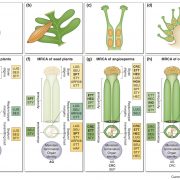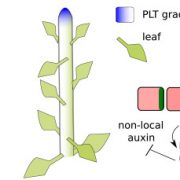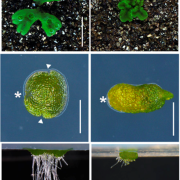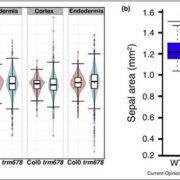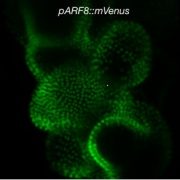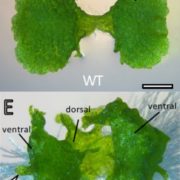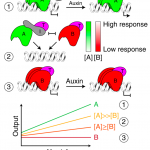How do auxin temporal dynamics regulate patterning? (eLIFE)
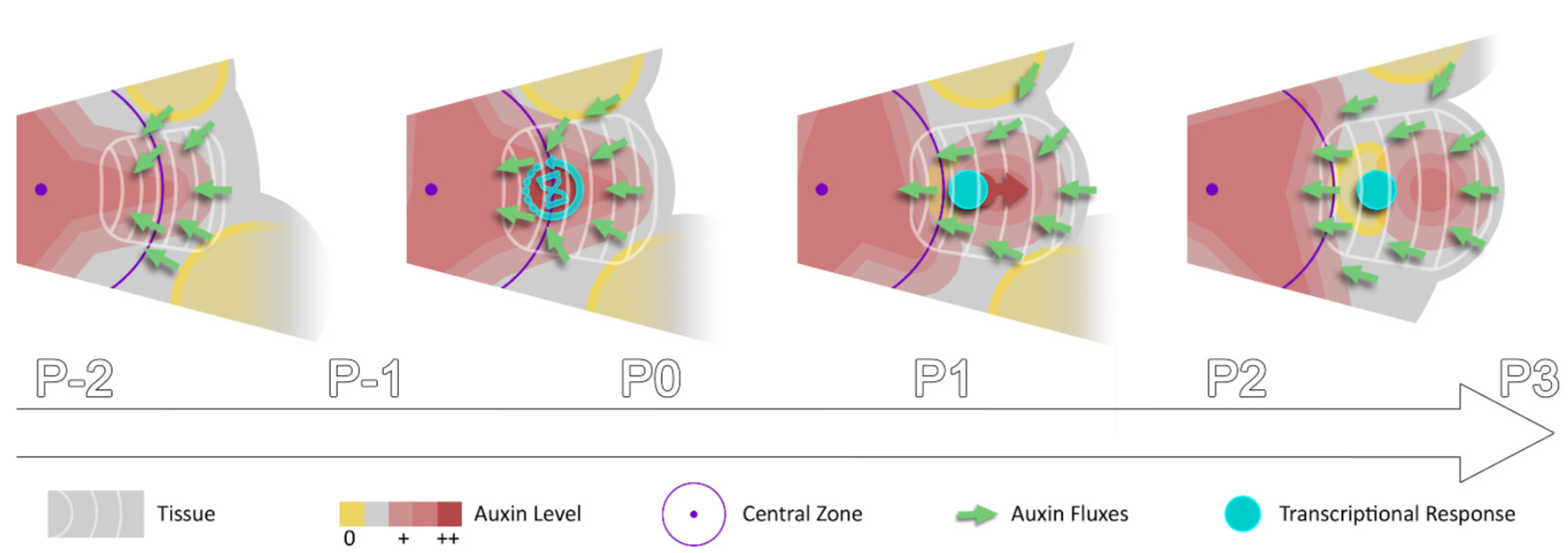 Auxin forms spatial gradients that are implicated in organ morphogenesis. However, it is not known how temporal auxin gradients are integrated with the spatial information. In this paper, Galvan-Ampudia, Cerutti et al., showed using a ratiometric quantitative auxin reporter (quantitative DII-VENUS) that auxin moves faster than cellular growth in the shoot apical meristem (SAM), and that the auxin maximum is not linked to specific cells but travels through the tissue radially in centrifugal manner producing a rhythmic pattern. The authors analyzed orientation of the auxin efflux protein PIN FORMED1 (PIN1) and observed a that the net orientation is towards the center of the SAM raising the question where and when the auxin synthesis happens. Analysis of YUCCA genes encoding auxin biosynthetic enzymes showed that the auxin synthesis happens in the primordia that are more developmentally advanced than the incipient primordia and is channeled to central zone of the SAM by the orientation of the PIN1 protein. Surprisingly, the authors observed that the auxin maximum does not immediately translate into transcriptional responses as there is a delay in the expression of an auxin sensitive transcriptional reporter (DR5) indicating that cells doesn’t become competent to auxin response until 10-14 hrs later (the time between successive organs). Thus, this paper shows that temporal auxin information is integrated in space for organogenesis expanding our understanding of auxin dynamics in time and space. (Summary by Vijaya Batthula @Vijaya_Batthula). eLife 10.7554/eLife.55832.
Auxin forms spatial gradients that are implicated in organ morphogenesis. However, it is not known how temporal auxin gradients are integrated with the spatial information. In this paper, Galvan-Ampudia, Cerutti et al., showed using a ratiometric quantitative auxin reporter (quantitative DII-VENUS) that auxin moves faster than cellular growth in the shoot apical meristem (SAM), and that the auxin maximum is not linked to specific cells but travels through the tissue radially in centrifugal manner producing a rhythmic pattern. The authors analyzed orientation of the auxin efflux protein PIN FORMED1 (PIN1) and observed a that the net orientation is towards the center of the SAM raising the question where and when the auxin synthesis happens. Analysis of YUCCA genes encoding auxin biosynthetic enzymes showed that the auxin synthesis happens in the primordia that are more developmentally advanced than the incipient primordia and is channeled to central zone of the SAM by the orientation of the PIN1 protein. Surprisingly, the authors observed that the auxin maximum does not immediately translate into transcriptional responses as there is a delay in the expression of an auxin sensitive transcriptional reporter (DR5) indicating that cells doesn’t become competent to auxin response until 10-14 hrs later (the time between successive organs). Thus, this paper shows that temporal auxin information is integrated in space for organogenesis expanding our understanding of auxin dynamics in time and space. (Summary by Vijaya Batthula @Vijaya_Batthula). eLife 10.7554/eLife.55832.
[altmetric doi=”10.7554/eLife.55832″ details=”right” float=”right”]


